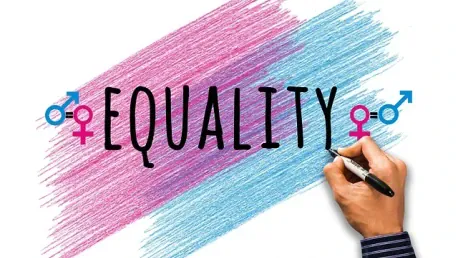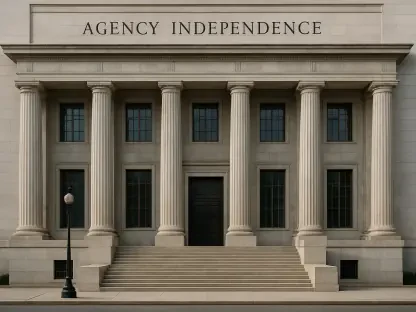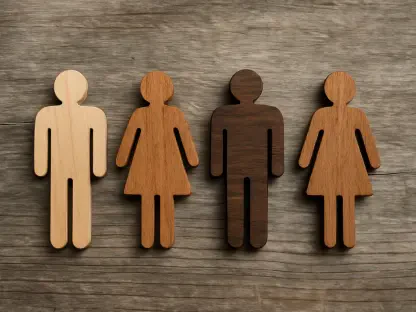In a groundbreaking development that spans beyond the realms of American soccer, the United States Women’s National Soccer Team (USWNT) has triumphed in their long-standing legal battle for equal pay. This victory marks a significant step in their pursuit of gender equality and broader social change, highlighting the immense strides made by the female athletes who dared to challenge the status quo. The resolution of this case sends ripples through the sports world and underscores the importance of equal treatment and opportunities for women.
The Genesis of the Legal Battle
Initial Complaint and Key Players
The journey toward this landmark victory began in 2016 when five key figures of the USWNT—Alex Morgan, Megan Rapinoe, Carli Lloyd, Becky Sauerbrunn, and Hope Solo—filed a wage discrimination complaint against U.S. Soccer. The primary allegation centered on the claimed disparities in compensation between the women’s and men’s teams, despite the women’s superior performance and success. This initial complaint laid the groundwork for what would evolve into a battle for justice, equality, and recognition on an international scale.
As the dispute gained traction, the spotlight fell on the glaring pay discrepancies between the women’s and men’s national teams. Despite winning multiple World Cups and bringing significant attention to the sport, the women were notably underpaid. Their historic achievements on the field did not translate into financial recognition, sparking a legal and public discourse around fairness and gender equality in sports. This initial stand by the USWNT leaders set the stage for a protracted, high-stakes struggle against ingrained institutional biases.
Breakthrough Settlement
The dispute reached a pivotal moment with the announcement of a $24 million settlement in 2022, with a significant portion of the sum earmarked for back pay. This settlement acknowledged the financial inequities the women faced and represented a tangible commitment from U.S. Soccer to rectify these injustices moving forward. The agreement also included a promise of equal pay for future competitions, such as the World Cup, in all new collective bargaining agreements (CBAs).
The breakthrough was not just a victory in monetary terms but symbolized recognition and validation of the women’s relentless efforts and success. It set a historic precedent in sports, reinforcing that equal pay is not just a matter of financial parity but also one of respect and acknowledgment of equal hard work and dedication. This settlement marked an essential step toward closing the pay gap and signaled a broader cultural shift within the sports world.
Bridging the Pay Gap
U.S. Soccer’s Commitment
Central to the settlement is U.S. Soccer’s resolute commitment to bridging the long-standing pay gap between its men’s and women’s teams. By promising equal compensation structures in upcoming CBAs, the organization aims to ensure future generations of women players are fairly rewarded. This commitment involves more than just matching salaries; it represents a significant redirection of financial resources towards supporting and nurturing women’s soccer in the United States.
The organization’s pledge serves as a model for other sports federations worldwide, emphasizing the need to rectify historical imbalances and invest in women’s sports. By aligning compensation frameworks, U.S. Soccer seeks to foster an environment where female athletes can thrive equally, thus setting a standard for other nations and sporting bodies to emulate. This bold move aims to dismantle systemic barriers and pave the way for a more inclusive and equitable future in sports.
Historical Disparities
One of the primary contributors to the pay disparity has historically been the discrepancy in World Cup prize money awarded by FIFA, with men’s teams receiving significantly larger payouts. This settlement seeks to address this fundamental issue by ensuring that future prize distributions are equitable, despite FIFA’s existing financial structures. The agreement signifies a vital step towards challenging the status quo and promoting gender equality on a global scale.
By acknowledging these historical disparities, the settlement underscores the broader need for change within the international sports community. The resolution represents a commitment to dismantling longstanding inequalities that have disadvantaged female athletes. As FIFA continues to evolve, the pressure mounts for the organization to reassess and rectify its prize money allocations, thereby fostering a more balanced and fair sporting environment worldwide.
Impact on Global Sports
USWNT’s Broader Influence
The USWNT’s struggle and success for equal pay extend beyond just the soccer field, positioning them as trailblazers in the broader movement for gender equity in sports. Their unwavering advocacy has inspired athletes from various other disciplines, including Olympic gold medalists in ice hockey and WNBA players, to demand better pay and improved working conditions. The USWNT’s influence has catalyzed a wider social movement, empowering more women to stand up for their rights and seek fair treatment in their respective sports.
This ripple effect is evident in the growing number of female athletes and organizations voicing their concerns about gender pay gaps and inequities. The USWNT’s battle has thus become a beacon of hope and resilience, illustrating that unified, persistent advocacy can lead to transformative change. Their leadership in this movement has not only elevated the discussion around pay equity but has also validated the importance of representation and fairness across all sports.
International Commitments
The broader significance of the USWNT’s fight is reflected in the commitments made by various soccer federations across the globe, including those in Norway, Australia, and the Netherlands. These countries have pledged to narrow and eventually eliminate the pay gap between their male and female players, aligning with the principles advocated by the USWNT. This international response underscores the far-reaching impact of the USWNT’s efforts, emphasizing the universal need for gender equality in sports.
These commitments from other nations highlight a growing recognition of the importance of equality and fairness in athletic compensation. As more federations adopt equal pay policies, the momentum for gender equity in sports increases, paving the way for systemic change. The USWNT’s successful advocacy has thus set a compelling precedent that continues to inspire and shape policies beyond American borders, driving a global movement with wide-reaching implications.
Legal Setbacks and Strategic Pivots
2020 Ruling and Continued Negotiations
The path to this landmark victory was fraught with challenges and strategic pivots. In 2020, a significant setback occurred when a federal judge dismissed the players’ primary equal pay claim, ruling that the women had earned more than the men on both a cumulative and per-game basis during the relevant period. However, rather than being deterred, the USWNT continued to engage in negotiations, focusing on enhancing working conditions and laying the groundwork for future gains.
This ruling, though initially perceived as a defeat, served as a pivotal moment that reinvigorated the USWNT’s resolve. By persisting through such legal hurdles, the team demonstrated their unwavering commitment to achieving their ultimate goal. Their ability to pivot and adapt their strategies exemplified their strategic acumen and underscored the importance of resilience and adaptability in advocacy for systemic change.
Determination and Strategy
The USWNT’s eventual success in securing both financial compensation and systemic changes highlights their determination and shrewd strategic approach. They strategically leveraged public support, media attention, and their visible platform to keep the conversation around pay equity alive. This multi-faceted strategy was instrumental in applying pressure on U.S. Soccer to come to the negotiating table and ultimately agree to the settlement.
By focusing on both legal and extrajudicial avenues, the USWNT effectively built a comprehensive case for equality. Their strategy emphasized the importance of persistence, public engagement, and coalition-building in advocacy efforts. The team’s ability to navigate setbacks, adapt strategies, and harness the power of public opinion played a crucial role in their eventual success, serving as a model for other advocacy movements.
Challenges in Negotiations
Disparity in FIFA’s World Cup Prize Money
A significant obstacle in the ongoing negotiations for new CBAs is the disparity in FIFA’s World Cup prize money, highlighting a persistent challenge in achieving true pay equity. For equal pay to be realized fully, an agreement must be reached to equalize the distribution of prize money between the men’s and women’s teams. U.S. Soccer’s commitment to not sign new CBAs unless World Cup payments are equalized underscores the gravity and complexity of this issue.
This requirement puts the men’s team in the position to potentially forgo or share millions of dollars in earnings to achieve parity. The men’s team’s willingness to engage in these conversations and participate in some of the women’s negotiating sessions, although not explicitly disclosed, suggests a growing solidarity within the organization. The alignment of both teams on this issue is essential for the comprehensive success and progress of the settlement and for setting a precedent for other federations.
Collaboration and Public Support
Public support and collaboration between the men’s and women’s teams have been crucial in advancing the settlement. The men’s union’s participation in negotiations signals a step toward a unified front, although the public nature of their support remains undisclosed. The success of the settlement and future negotiations will largely hinge on the ability of both teams to work together and present a united stance on equity issues.
Building on the momentum of public backing, which was significantly galvanized by the USWNT’s high-profile campaign, is essential. The alignment and cooperation of both teams highlight the necessity of collective efforts to overcome entrenched systemic barriers. As negotiations progress, continued public attention and support play a vital role in holding stakeholders accountable and ensuring the promises made are fulfilled.
Initial Dispute and Public Backlash
Disparities in Compensation
The initial complaint brought to light significant disparities in bonuses, appearance fees, and meal stipends during training camps, igniting widespread outrage and support for the USWNT’s cause. The female players highlighted that they earned as little as 40% of what their male counterparts received, despite their exceptional on-field achievements, including multiple World Cup victories. This stark contrast in compensation underscored broader societal issues regarding gender discrimination and fairness.
These disparities were not merely about numbers but reflected deep-rooted biases and undervaluation of female athletes. The players’ courage in exposing these inequities resonated with many, triggering a broader dialogue about gender parity in the workforce. Their transparency in sharing their experiences brought global attention to the systemic issues within sports organizations, prompting calls for comprehensive reforms.
Public Relations Campaign
Initially, U.S. Soccer attempted to justify the pay gap by referencing higher revenues and viewership for men’s games. However, this stance quickly crumbled under public scrutiny and backlash, driven by support for the USWNT and a growing awareness of equal pay laws. Leveraging their popularity and social media presence, the USWNT transformed their legal battle into an effective public relations campaign, mobilizing widespread support and spotlighting gender inequities.
The campaign’s success lay in its ability to humanize the issue and connect with a broad audience. The players’ visibility and influence on social media allowed them to communicate their message effectively, galvanizing support from various quarters, including fans, activists, and lawmakers. By framing the struggle as part of a larger movement for gender equality, the USWNT managed to maintain public interest and pressure U.S. Soccer to address their concerns, demonstrating the power of strategic communication in advocacy.
Turning Points and Cultural Shifts
2020 Settlement on Working Conditions
The 2020 ruling might have initially seemed like a setback, yet it became a turning point in the ongoing struggle for equal treatment. This critical moment underscored the challenges faced by the players and highlighted the complexities of the legal battle. The resolution on working conditions later that year marked a significant step towards compromise and collaboration. This aspect of the settlement was vital to achieving broader gains, indicating a willingness from both parties to continue negotiations and seek a mutually beneficial outcome.
With Cindy Parlow Cone, a former USWNT player, now leading U.S. Soccer, the dynamics of the negotiations shifted. Cone’s leadership facilitated a more empathetic and understanding approach to the players’ demands, bridging gaps that previously seemed insurmountable. This change in leadership and strategy was crucial in forging a path towards an achievable deal that aligned with modern values of fairness and equality.
Cultural Shifts Within U.S. Soccer
In a historic breakthrough extending beyond American soccer, the United States Women’s National Soccer Team (USWNT) has emerged victorious in its prolonged legal fight for equal pay. This victory signifies a monumental step forward in their relentless pursuit of gender equality and broader social justice, underlining the remarkable achievements of female athletes who challenged societal norms. The conclusion of this case reverberates through the sports community, amplifying the critical message of equal treatment and opportunities for women. This landmark win not only ensures fair compensation for the extraordinary talents of the USWNT but also sets a precedent that may inspire similar movements across various professional sports and industries. The team’s success showcases the power of perseverance and advocacy, proving that systemic change is indeed possible. As the world watches, the USWNT’s triumph serves as a beacon of hope and progress in the ongoing struggle for gender parity.









